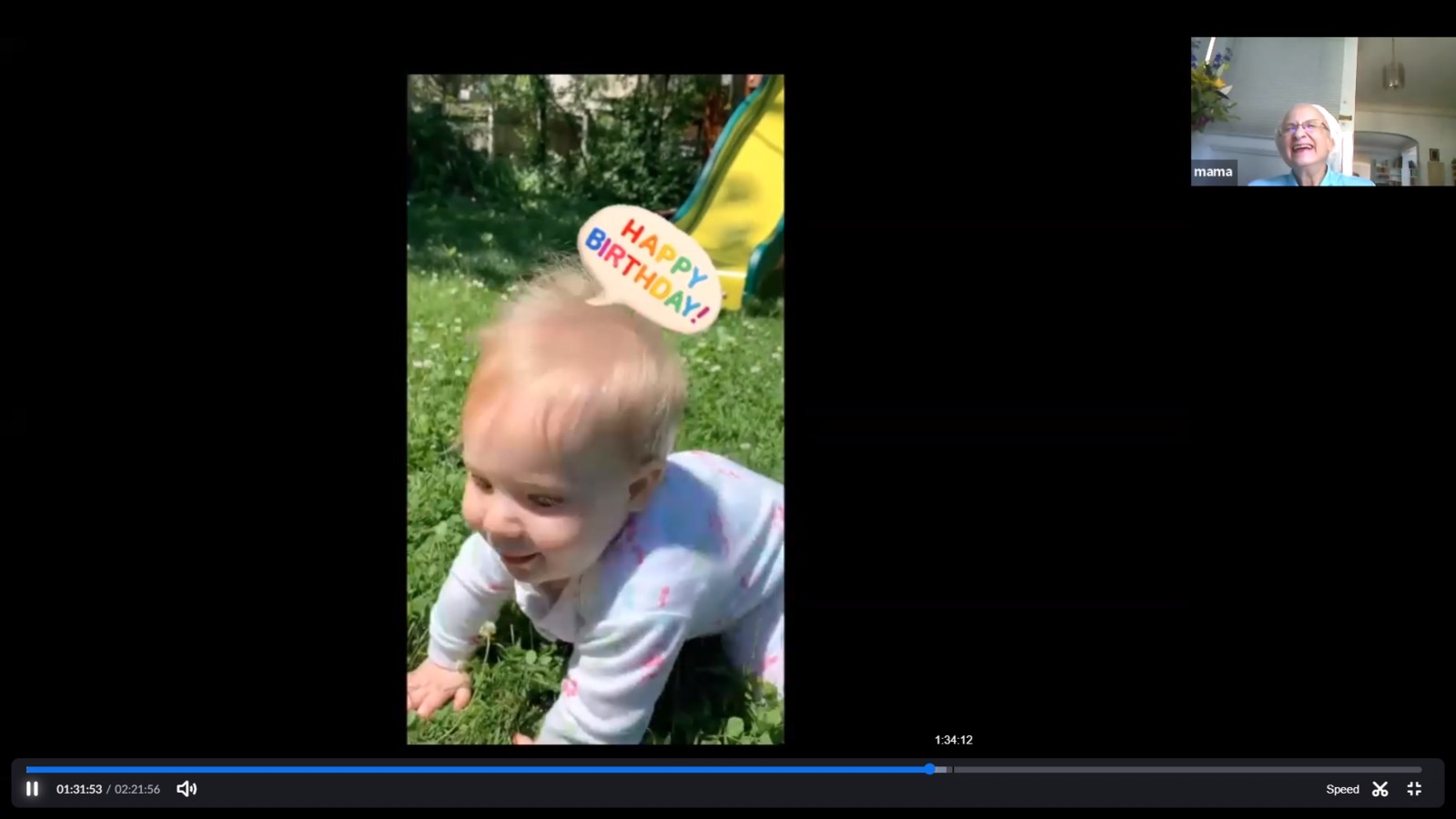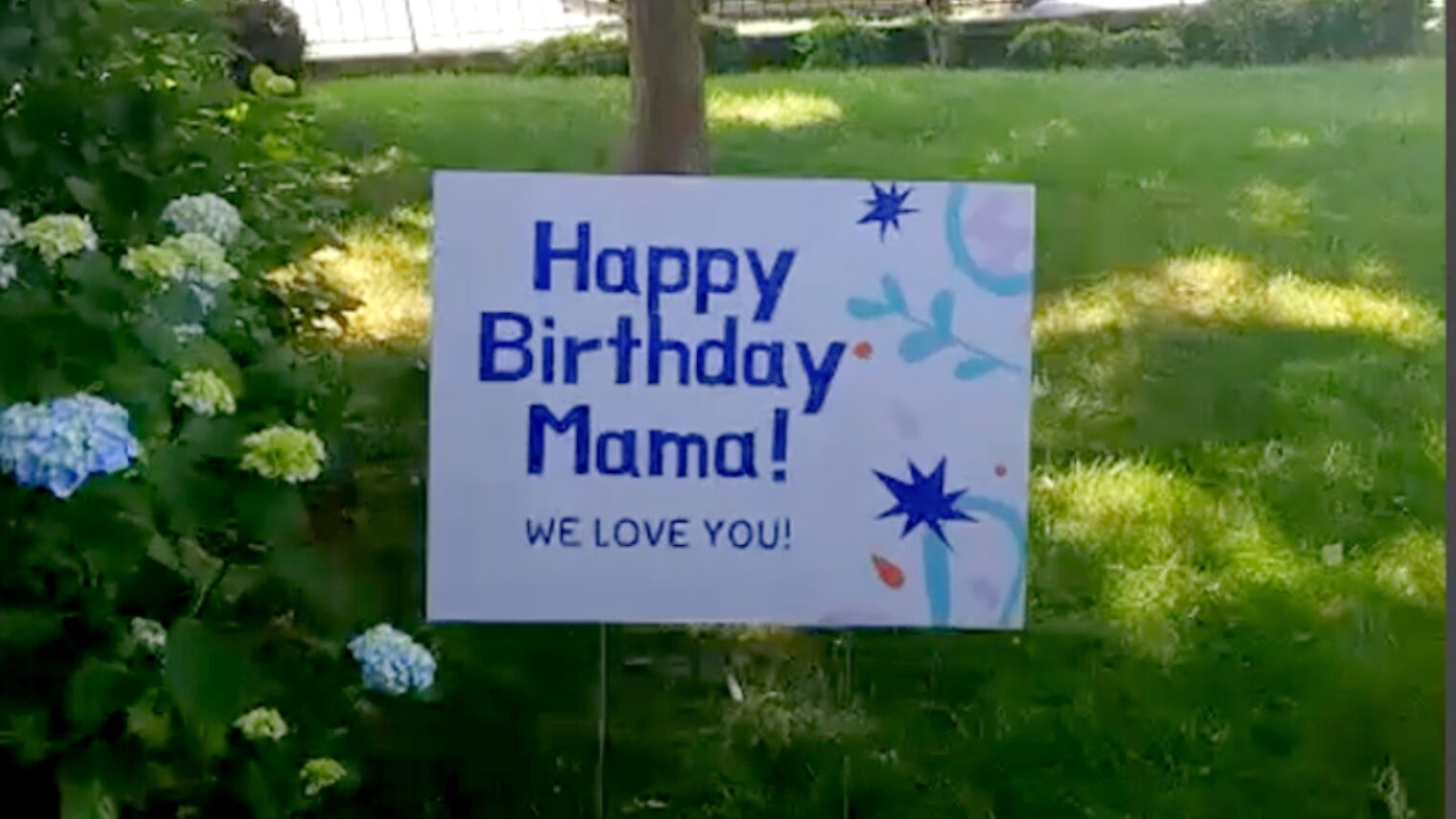Moving to Israel nearly 13 years ago put 6,000 miles between my mother and me. No longer could I hop in the car for a 20-minute ride to visit her. Now we see each other just once or twice a year and that requires a long, expensive plane trip.
Last November I began planning her 90th birthday party in June. By early January, I had purchased plane tickets, reserved a room in a community center and chosen a caterer. I was planning party details with my brothers and sisters-in-law via frequent emails.
Then came Covid-19. There would be no birthday party and no flight to New York.
Our disappointment was tempered by gratitude that my mother (we call her Mama or Great-Mama) was safe and healthy.
Providing tech support from afar, my husband got her computer outfitted with a camera and microphone so she could participate in online meetings and webinars. Mama cannot enjoy her usual volunteer activities and hosting guests, but she became a whiz at Zooming and ordering groceries.
So it seemed logical to move her party online. And although this format was Plan B, the virtual party turned out to have advantages over Plan A.
One of my brothers lives in Israel as I do. Another lives in Rochester, New York and the third in Baltimore. Mama’s 18 grandchildren and 55 great-grandchildren are scattered across Israel and the United States. She has close friends and relatives in several states.
Getting everyone together in one location on June 21 was going to be logistically challenging and quite costly. Getting them together in cyberspace was comparatively a breeze.
To start at the end of the story: Mama’s multiple-time-zone Zoom party was a smashing success. Even despite a few technical glitches — mainly sound and latency issues that we fully anticipated — overall it was miraculously smooth.
To guarantee every family uninterrupted screen time, I created a Google Sheet on which my siblings, children, nieces and nephews signed up for five-minute time slots. I then offered unclaimed time slots to close relatives and friends.
At precisely 11am Eastern time, everyone started popping up on the screen. The festivities continued for more than two hours yet seemed to fly by.

Our American guests spanned the country from Portland, Oregon to Portland, Maine — including Colorado, Texas, Illinois, Ohio, New York, Florida, Maryland, Georgia, Washington DC and New Jersey. Our Israeli guests joined in from nine different municipalities.
A few of Mama’s grandchildren and great-grandchildren surprised her by showing up with a lawn sign, balloons, a handmade birthday crown and refreshments. They stayed outside on her porch, socially distanced and masked, but their presence during the party assured she did not feel physically alone.
The fabulous presentations included songs, dances, blessings, original poems, PowerPoints, a science demo and a Q&A about past events in Mama’s life. Some were pre-recorded in case the kids got camera-shy or cranky at the live event.
Mama loved the party and has watched the recording several times. She was so happy that the far-flung great-grandchildren got to see cousins they only know from pictures, and to admire one another’s creativity and talents. She got to spend time with her entire family, and old and new friends, without any travel, grocery shopping, setup or cleanup.
What was missing, of course, were hugs and kisses. Neither social nor geographic distance allows for touch. In a pandemic situation, it makes no difference whether we live in Israel or around the block. But we hope to be able to visit soon.
If you’re thinking of staging a similar event, perhaps you can benefit from our lessons learned.
Lesson 1: Do a practice session or two
We originally planned to use Google Meet. But my sibs and I did a trial run and discovered we couldn’t show videos or record. My husband quickly opened a Zoom account, and updated invitations were sent out with the new link. Then we did another trial to get comfortable with the functions and format. (The screen-share function is clunky and takes some practice.)
Lesson 2: One person at a time
With so many participants, background noise and unscheduled monologues can torpedo the program. Appoint an emcee (or different emcees for specific parts of the event) to keep things moving and turn microphones on or off as needed.
Lesson 3: Stick to a schedule
Five minutes per person/group assured that nobody got bored or droned on endlessly, and allowed enough time to fix minor technical glitches. If a crying baby or other problem kept someone from using their slot, we called on the next person and came back later.
Lesson 4: Keep your phone handy
Although many guests used the chat box to communicate privately or to the whole group, I fielded a few WhatsApp messages, emails and phone calls from people who lost the Zoom link or needed to switch their time slot.
Lesson 5: Make the memories last
The record function is vital. I shared the link with our extended family and with invitees who couldn’t join us. Prior to Mama’s birthday, we also sent a link to an online group card called Kudoboard. Well-wishers contributed 111 birthday messages including text, photo and video. These were great ways to create lasting mementos, even from afar.














